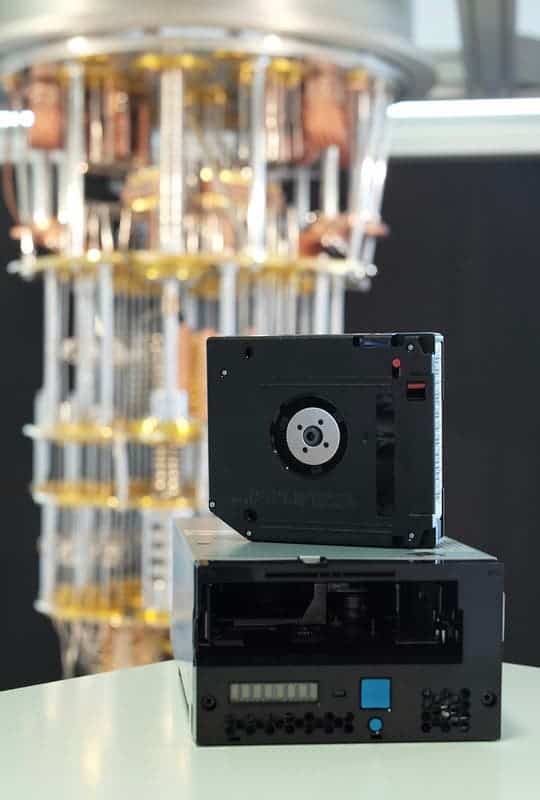Someday, quantum computers should help scientists solve problems that are intractable using classical computers. But, this also means they’ll also be able to compute things we would typically like to remain unsolvable — such as encryption algorithms.
Already looking into the future, researchers at IBM Tape Development in Tucson and IBM Research Zurich have devised the first tape drive that can keep data secure against state of the art quantum decryption techniques.

Although magnetic tape was invented many decades ago, it’s still being used by many enterprises to store highly valuable data.
Floppy disks have long been obsolete, but when it comes to archiving data, there’s no better medium than tape.
While hard drives and SSDs are much more suited for accessing databases and reading small files, tape is ideal for storing large amounts of data over a long time. That’s because it’s incredibly cheap and dense. The current theoretical limit is about 29.5 billion bits per square inch, which would mean a magnetic tape the size of a traditional hard drive could store about 35 terabytes of information.
Another reason why tape is appealing for long-term storage is that it’s highly secure. Unlike disks, tape doesn’t need to be powered on to retain data, which means you can’t possibly access it remotely when it’s not in use. Tapes also use asymmetric encryption techniques, or public/private key encryption, to further boost security.
“Magnetic tape has a long history of leadership in storage security and is an essential technology for protecting and preserving data. For example, IBM tape drives were the first storage technology to provide built-in encryption starting with the TS1120 Enterprise Tape Drive. In addition, tape provides an additional layer of security via an air gap between the data stored on a cartridge and the outside world, i.e. data stored on a cartridge cannot be read or modified unless it is mounted in a tape drive,” Mark Lantz, who leads the Advanced Tape Technologies effort at IBM Research Zurich, told ZME Science.
When an asymmetric key pair is generated, the public key is typically used to encrypt, and the private key is typically used to decrypt. The key size (bit-length) of a public and private key pair decides how easily the key can be exploited with a brute force attack. Theoretically, a 2048-bit RSA key can’t be cracked even with today’s fastest computers — but it could be shattered with a quantum computer.
IBM researchers believe that at the current rate of development, asymmetric encryption could become obsolete as early as ten years from now. This is why they’ve developed a new class of cryptographic algorithms that should solve the potential security concerns posed by quantum computers.
The new quantum-safe algorithms, including Kyber and Dilithium, are part of a cryptography suite called CRYSTALS, which is based on mathematical problems that have been studied since the 1980s and haven’t yet succumbed to algorithmic attacks, either classical or quantum. The quantum computing safe tape drive was implemented using an IBM TS1160 tape drive, the most recent enterprise-class tape drive from IBM. These algorithms are part of the firmware, which means existing tape drives could be upgraded with them.
Next, the IBM researchers plan on working closely with the National Institute of Standards and Technology (NIST) to standardize their algorithms, which have been made open source. The plan is to implement CRYSTALS to secure the entire IBM Cloud from quantum computer attacks by 2020.
“An important next step for the team is to investigate the feasibility of implementing quantum computing safe encryption technology in a state of the art mid-range LTO (Linear Tape Open) tape drive as well as investigating the feasibility of supporting quantum computing safe encryption in older generations of tape drives,” Lantz said.






